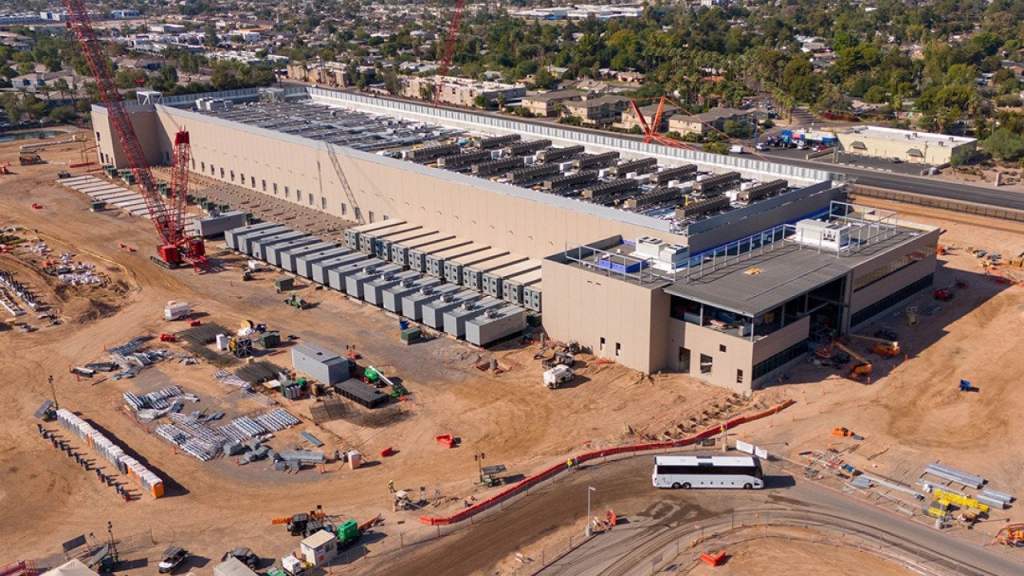How to power the AI economy while supporting local communities
Published 6:00 pm Wednesday, July 9, 2025
How to power the AI economy while supporting local communities
American leadership in artificial intelligence promises massive economic opportunities and transformation across industries: AI systems are poised to drive breakthroughs in drug discovery, enable critical infrastructure, and revolutionize sectors from healthcare to finance.
To drive these shifts, AI needs a massive amount of energy. By 2028, AI data centers are expected to account for 12 percent of nationwide electricity demand. Data centers’ median size will more than double over the next decade, according to a survey of US data center operators from power provider Bloom Energy. Some will require more than a gigawatt of power – enough for over 800,000 average American homes.
Balancing AI growth with local community well-being
Many Americans are concerned about how AI’s hunger for energy will impact them. Communities around the country are pushing back against the building of new data centers nearby, despite their potential to create jobs and boost local economies.
Trending
Chief among communities’ concerns are rising energy costs and how new data centers could drive them up further. Growing pressure on the grid also increases the risk of power outages, and communities are alarmed about data centers’ potential pollution, noise, and water and land use.
Powering the AI economy without local communities bearing the brunt of higher energy bills, power outages, and pollution is a challenge, to be sure. But specific types of onsite power can create a “yes, and” to fuel AI’s growth and support communities.
What is onsite power?
Onsite power means physically producing electricity at the location where it’s used. For example, fuel cells are a type of onsite power that convert natural gas, hydrogen, or biogas into electricity without using combustion. Other power sources that data centers can deploy onsite include natural gas engines and turbines.
When data centers use certain kinds of onsite power, it creates several advantages for both local communities and AI’s growth.
- Lower impact on consumer energy costs. Some facilities use onsite power to go “off-grid,” meaning they don’t connect to the electricity grid – and therefore that their energy costs don’t affect local residents’ utility bills. Others use onsite power as a primary source while maintaining a connection to the grid.
Utilities can also work directly with onsite power providers to produce energy for data centers in their service areas and “fence off” that coverage, preventing data centers’ costs from being passed on to consumers.
Approaches like these help keep consumer utility bills stable while providing reliable power for data centers to fuel AI.
- Less pollution. Some onsite power technologies like fuel cells produce significantly lower emissions than traditional energy sources because they don’t use combustion. Fuel cells also reduce smog-forming local air pollution by more than 99% compared to traditional energy generation technologies, and use a tiny fraction of the water that legacy combustion generators need.
- Smaller footprint. High power density—producing relatively large amounts of power in a given space—is a major benefit of some onsite power sources. Gas turbines and reciprocating engines provide up to 50 megawatts of power per acre, while fuel cells can deliver double that – up to 100 megawatts on less than an acre. This small footprint can help ease communities’ concerns about data centers’ visual impacts and the loss of open space.
- Quieter. Excess noise is a significant concern among many communities near data centers. Onsite power sources like fuel cells are much quieter than other energy sources, operating at ~70 dBA – about the sound level of a normal conversation.
Aiming for a win-win for AI and communities
Trending
Interest is rising in onsite power generation for data centers: by 2030, nearly 40% expect to use some onsite power and 27% say it will provide all of their electricity.
This will help data centers deliver on their promised local economic benefits—and AI’s broad transformative potential—without the adverse effects of higher energy costs, power outages, and more pollution and noise in American communities.
This story was produced by Bloom Energy and reviewed and distributed by Stacker.
![]()





